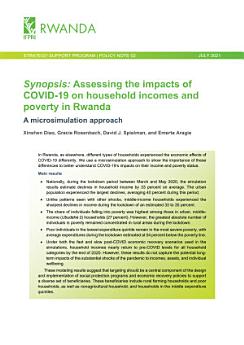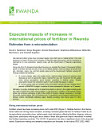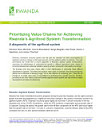Synopsis: Assessing the impacts of COVID-19 on household incomes and poverty in Rwanda: A microsimulation approach
About this ebook
Main results:
Nationally, during the lockdown period between March and May 2020, the simulation results estimate declines in household income by 33 percent on average. The urban population experienced the largest declines, averaging 40 percent during this period.
Unlike patterns seen with other shocks, middle-income households experienced the sharpest declines in income during the lockdown of an estimated 33 to 35 percent.
The share of individuals falling into poverty was highest among those in urban, middle income (Ubudehe 2) households (27 percent). However, the greatest absolute number of individuals in poverty remained concentrated in rural areas during the lockdown.
Poor individuals in the lowest expenditure quintile remain in the most severe poverty, with average expenditures during the lockdown estimated at 54 percent below the poverty line.
Under both the fast and slow post-COVID economic recovery scenarios used in the simulations, household incomes nearly return to pre-COVID levels for all household categories by the end of 2020. However, these results do not capture the potential longterm impacts of the substantial shocks of the pandemic to incomes, assets, and individual wellbeing.
These modeling results suggest that targeting should be a central component of the design and implementation of social protection programs and economic recovery policies to support a diverse set of beneficiaries. These beneficiaries include rural farming households and poor households, as well as nonagricultural household, and households in the middle expenditure quintiles.






